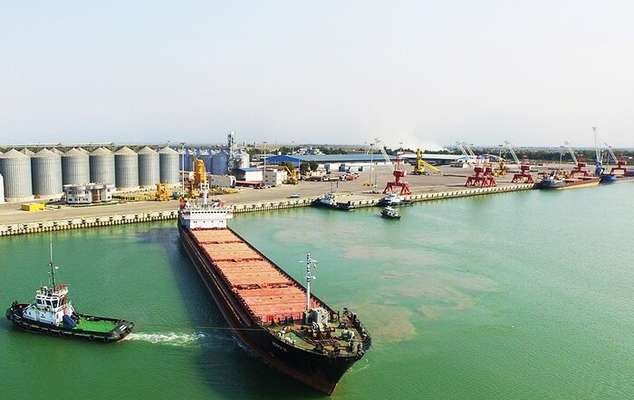Loading unloading of goods in AmirAbad port up 7 in a year
Loading, unloading of goods in Amir-Abad port up 7% in a year
TEHRAN – The loading and unloading of goods in Amir-Abad port, in the northern Mazandaran province, increased by seven percent in the past Iranian calendar year 1403 (ended on March 20), as compared to the previous year, according to the director-general of Amir-Abad Ports and Maritime Department.

Mohammad-Ali Mousapour Gorji said that 5,040,262 tons of goods were loaded and unloaded in this port in the previous year.
He introduced Amir-Abad port as the grain hub in the northern ports and the second port for importing essential goods among the country's ports, saying that of the total operations, 3,666,103 tons were related to the unloading of these types of goods last year, a seven percent increase compared to the preceding year.
Referring to the 57 percent share of unloading and loading goods among the country's northern ports, Mousapour Gorji said: "With the aim of diversifying exported goods to CIS countries, the amount of Iranian goods exported to these countries has also grown by 20 percent to 1,511,430 tons, with the majority of products exported from this port including cement, building materials, stone and ceramics, metal products, and pipes."
He stated: "Creating product diversity in the export of domestically produced products was one of the planned goals last year, and Amir-Abad Port has been able to provide this opportunity for the export of any type of manufactured product by creating an attraction for traders and product owners and by preparing a suitable platform."
As previously announced by Saeed Rasouli, the deputy transport minister,
Iran's ports handled a total of 234.8 million tons of goods in the past Iranian year.
Of this total, 82.3 million tons were unloaded and 152.5 million tons were loaded at the country’s northern and southern ports. Oil products accounted for 103 million tons of the total, while non-oil goods made up nearly 131.8 million tons.
Rasouli said that oil cargo unloading amounted to 28.4 million tons, and non-oil cargo unloading stood at 53.9 million tons. On the export side, 74.7 million tons of oil products and 77.9 million tons of non-oil goods were loaded at ports.
Container handling also saw a notable uptick, with 3.08 million twenty-foot equivalent units (TEUs) processed in 2024—a 13 percent increase from the 2.73 million TEUs recorded in the previous year.
The figures reflect the ongoing expansion of Iran’s port infrastructure and logistics capacity, despite international sanctions and logistical challenges.
In recent months, Iran's port operations have demonstrated resilience and growth, despite facing significant challenges. The Caspian Port, located in the Anzali Free Zone of Gilan Province, has emerged as a pivotal hub in the International North-South Transport Corridor. Since its connection to the Iranian railway network in June 2024, the port has enhanced its cargo handling capabilities, facilitating more efficient trade routes between Iran and its northern neighbors.
Meanwhile, the Port of Shahid Rajaee continues to play a dominant role in Iran's maritime logistics, accounting for approximately 85 percent of the country's total cargo throughput. The port has seen a significant increase in container loading for export, reflecting its strategic importance in Iran's trade infrastructure.
However, the country's port operations have not been without challenges. The energy crisis that intensified in late 2024 led to widespread power outages, affecting various sectors, including port activities. Despite these disruptions, Iranian ports have managed to maintain a steady flow of cargo, showcasing the sector's adaptability and the government's commitment to sustaining trade operations under adverse conditions.
Looking ahead, Iran's focus on expanding and modernizing its port infrastructure, coupled with strategic investments and international collaborations, positions the country to enhance its role in regional and global trade networks.
MA
source: tehrantimes.com